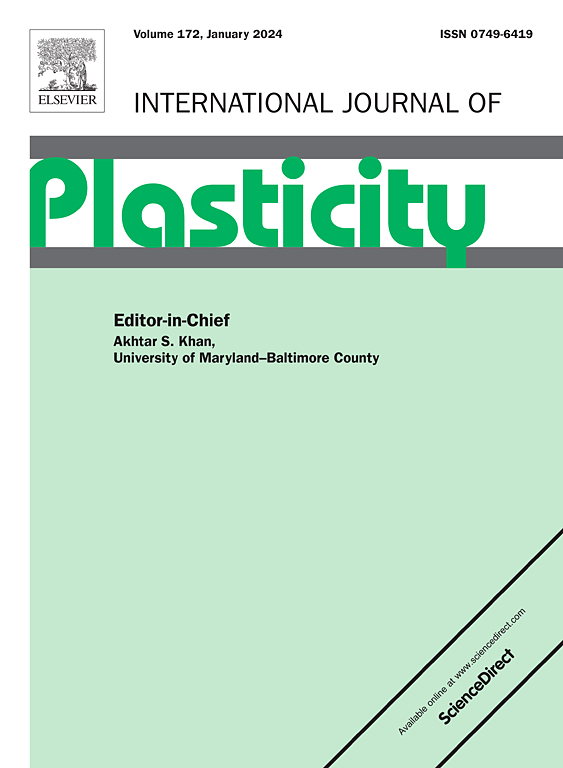多晶ni3al基高温合金γ′相与M23C6的协同控制:显微组织与抗蠕变性能
IF 9.4
1区 材料科学
Q1 ENGINEERING, MECHANICAL
引用次数: 0
摘要
多晶镍-3Al基超级合金中的晶内γ′相和晶间M23C6是通过两阶段冷却溶液处理协同控制的。快速冷却阶段抑制了γ′相的粗化,而随后的缓慢冷却阶段则促进了 M23C6 的析出。晶粒内和晶粒间的共同强化延长了蠕变寿命。在晶粒内部,形成了拓扑反转的微结构,变形主要由反相边界耦合超部分的运动所主导。在晶粒间,超位移向晶粒边界的运动受到 M23C6 的阻碍。基于这些观察结果,我们采用理论模型来构建蠕变特性与微/子结构之间的关系。计算了由γ′相引起的位错运动阈值应力、M23C6 诱导的边界障碍应力和晶间空洞成核的能量势垒,以供讨论。本文章由计算机程序翻译,如有差异,请以英文原文为准。
Cooperatively controlling γ′ phase and M23C6 of a polycrystalline Ni3Al-based superalloy: Microstructure and creep resistance
The intra-granular γ′ phase and inter-granular M23C6 in a polycrystalline Ni3Al-based superalloy are cooperatively controlled through a two-stage-cooling solution treatment. The rapid cooling stage suppresses the coarsening of the γ′ phase, while the subsequent slow cooling stage promotes the precipitation of M23C6. The co-strengthening of intra- and inter-granular particles leads to a longer creep life. Intra-granularly, topologically inverse microstructures are formed, the deformation is dominated by the motion of antiphase boundary coupled superpartials. Inter-granularly, the movement of superdislocations towards the grain boundary is obstructed by the M23C6. Based on these observations, theoretical models are employed to construct the relationship between the creep properties and the micro/sub-structures. The threshold stress against dislocation movement contributed by γ′ phase, the boundary obstacle stress induced by M23C6 and the energy barrier for inter-granular cavity nucleation are calculated for discussion.
求助全文
通过发布文献求助,成功后即可免费获取论文全文。
去求助
来源期刊

International Journal of Plasticity
工程技术-材料科学:综合
CiteScore
15.30
自引率
26.50%
发文量
256
审稿时长
46 days
期刊介绍:
International Journal of Plasticity aims to present original research encompassing all facets of plastic deformation, damage, and fracture behavior in both isotropic and anisotropic solids. This includes exploring the thermodynamics of plasticity and fracture, continuum theory, and macroscopic as well as microscopic phenomena.
Topics of interest span the plastic behavior of single crystals and polycrystalline metals, ceramics, rocks, soils, composites, nanocrystalline and microelectronics materials, shape memory alloys, ferroelectric ceramics, thin films, and polymers. Additionally, the journal covers plasticity aspects of failure and fracture mechanics. Contributions involving significant experimental, numerical, or theoretical advancements that enhance the understanding of the plastic behavior of solids are particularly valued. Papers addressing the modeling of finite nonlinear elastic deformation, bearing similarities to the modeling of plastic deformation, are also welcomed.
 求助内容:
求助内容: 应助结果提醒方式:
应助结果提醒方式:


